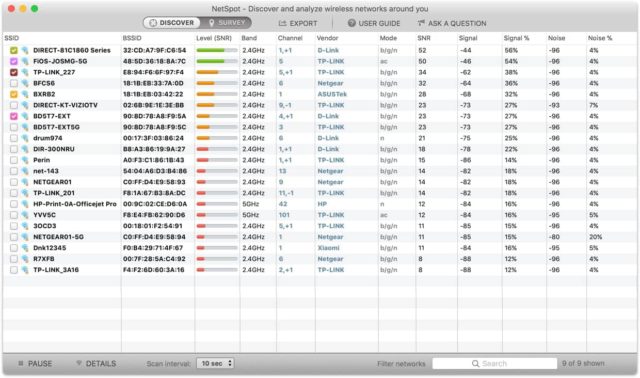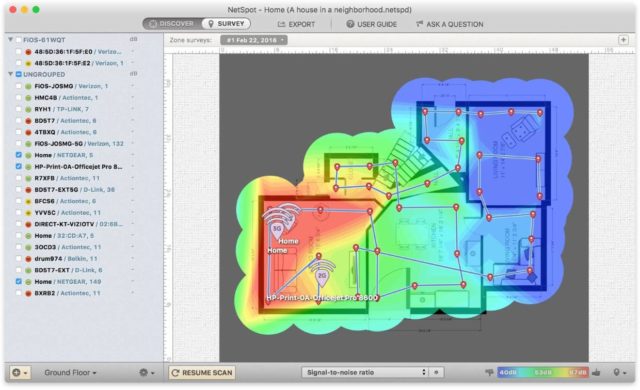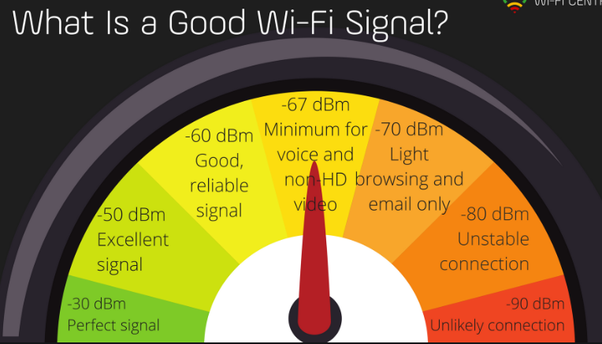Have you noticed how slow your internet is or the slowness of the web pages as they load in your browser? Your wireless signal strength could be the problem. It may imply that you are somewhat too far from your router, or thick walls and furniture are blocking the signal.
But you can readily check wireless signal strength in order to determine the problem.
Why measure WiFi strength?
When setting up a wireless network, your #1 goal is to achieve an optimum connection in your space or every corner of it. Walls, furniture, and other physical obstacles can severely affect the overall strength of the network signal.
Other appliances and networks can also cause wireless interference, so you may need to consider them.
When you have a strong WiFi signal, it means a more reliable connection, thus enabling you to readily take full advantage of the internet speeds that are available to you. The signal strength of your WiFi depends on several factors such as the distance or how far away you are from your wireless router, the materials – e.g., walls, furniture, etc. – around you as well as whether your router is a 2.4GHz or 5GHz connection.
The closer you are to your wireless router, the better the internet connection and speed. Although 2.4GHz connections broadcast further, they have a tendency for interference issues. Moreover, thick walls built of concrete or other denser materials can block WiFi signals.
But a weaker wireless signal, on the other hand, leads to dropouts, slower speeds, and total disconnection in some cases.
Please take note that it is not every connection issue or problem that is caused by weak signal strength. So, if the internet speed on your smartphone or tablet is relatively slow, you should consider rebooting your wireless router if you have ready access.
But if the problem persists, check if the WiFi is the problem. Use a device that is connected to the internet via Ethernet. And if you are still having trouble connecting to the internet, the network may be the problem.
However, if the Ethernet connection is fine and resetting the router didn’t help, then you may have to check your WiFi signal strength.

What is good wireless signal strength?
WiFi signal strength is measured in several ways, though the most common unit of measurement is in decibels per milliwatt (dBm). It is usually helpful to understand different measurements like Received Signal Strength Indicator (RSSI) or milliwatts (mW).
Wireless network signals are usually measured in dBm and as negative numbers ranging from -30 to -90. A perfect signal is measured at -30dBm. This may not always be possible; however, any signal between -67 to -30dBm will enable you to browse the internet comfortably.
How do I check my wireless signal strength?
You can check your WiFi signal strength in two major ways: the easy and the not-so-easy way.
The top bar of a smartphone shows the battery life, the WiFi symbol, and other notifications.
You can check the strength of your wireless signal by examining the device to see if it has issues or not. Your device should display a WiFi connection indicator, whether it is using Windows, Mac, iOS, or Android. You should see four or five curved lines that make up the WiFi symbol. The more curved lines you see, the more reliable the signal connection.
Every laptop, tablet, and smartphone is different, so the way these devices display WiFi strength is different. So, consult a second or third device. So, let’s say you checked a phone for a wireless signal; you should consider testing a tablet or laptop.
Then compare the internet performance on both devices so that you can see what they display for WiFi strength. If you observe similar results on both devices, you have an excellent criterion to use.
However, if you have been able to determine the weakness of your WiFi connection at a particular spot, you should take a walk around with your eyes fixated on the WiFi bars on your tablet or smartphone. You should also keep track of how far you are from the wireless router, as well as the number of walls between you and the gadget.
Take note of areas where your WiFi bars decrease and increase. This is an easy way to check the strength of your wireless signal.
You can also use a WiFi analyzer to measure the decibels relative to a milliwatt.
How to analyze wireless signal strength?
You can use a WiFi analyzer from NetSpot that examines the spectrum to view signal strength, networks, and channels.
You can use the tool to collect data, which will help you identify problems or show potential solutions such as switching over to another channel in order to minimize congestion. You will also discover areas in your residence or office with a weak wireless signal.

How to increase wireless signal strength in home?
Knowing the issues or challenges, you have with your WiFi will give you a fair idea of how to overcome it. You can increase the wireless strength in your home. But before then, move to the edges of your home. If you still see most of the bars that depict WiFi connection or a 60dBm signal, then your internet connection problem is not related to WiFi strength.
Next, check for interference or consider changing channels. You may also upgrade your wireless router to one that supports 5GHz, that is if the one you are currently using isn’t.

Are you quickly losing the signal when you are one or two rooms away? Then you should consider the age of your wireless router or its placement. The walls of your home could be thick enough to disrupt WiFi signals, or the router may be an old one that is not capable of broadcasting far. Upgrade to a new router that supports both 2.4 and 5GHz. The latter signal does not extend as far as a 2.4GHz signal, but it has several options that you can utilize to bypass problems.
Move your router close to the center of your home if you use plaster walls. Mesh router is the option of choice if you want to increase your WiFi signal throughout your office and home.
There is no one-size-fits-all solution when it comes to increasing WiFi signals in every residence or office. But you can try out these suggestions to see which works for you.
Conclusion
You can check wireless signal strength by carrying out WiFi analysis via the use of a NetSpot WiFi analyzer. This will be very helpful for you to determine the perfect spot for your wireless router.
As a rule of thumb, you should always position your WiFi router close to the center of your office or home. You should also consider thick walls, furniture, and other physical obstacles that could get in the way of the wireless signals.
